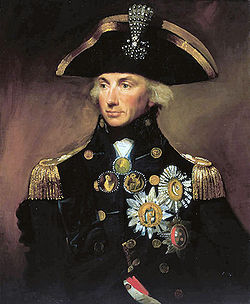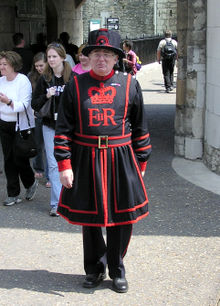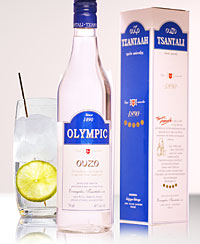TITLE DEED
TRAFALGAR SQUARE
RENT $20
PRICE $240
With 2 houses $300
With 3 houses $750
With 4 houses $925
Trafalgar Square is owned by the Queen in Right of the Crown, and managed by the Greater London Authority, while Westminster City Council owns the roads around the square, including the pedestrianised area of the North Terrace.[
Trafalgar Square Web Cam
TITLE DEED
TRAFALGAR SQUARE
The name commemorates the Battle of Trafalgar (1805), a British naval victory of the Napoleonic Wars over France. The original name was to have been "King William the Fourth's Square", but George Ledwell Taylor suggested the name "Trafalgar Square".[1]
Vodka (Polish: wódka, Russian: водка) is a distilled beverage. It is composed primarily of water and ethanol with traces of impurities and flavorings. Vodka is made by distillation of fermented substances such as grains, potatoes, or sometimes fruits.
Traditionally prepared vodkas had an alcoholic content of 38% by volume. Today, the standard Polish, Russian and Lithuanian vodkas are 40% abv (80 proof), although many non-export Russian brands are sold at 38%. The European Union has established a minimum of 37.5% alcohol by volume content for any European vodka to be named as such.[1][2] Products sold as vodka in the United States must have an alcoholic content of 40% or more.[3] Homemade vodka, referred to as "samogon" in Russia and Ukraine, sometimes has an ABV as high as 62%.
The Don Cossack Host (Russian: Всевеликое Войско Донское, Vsevelikoye Voysko Donskoye) was a frontier military organization from the end of the 16th until the early 20th century.
The name Cossack (казак, козак) was widely used to describe "free people" as opposed to others with different standing in a feudal society (i.e., peasants, nobles, clergy, etc..). The word 'cossack' was also applied to migrants, free-booters and bandits.[2] Kazakh (казах) is another example of a derivative of this word used to describe nomads of the Central Asian steppes.Following the defeat of the White Army in Russian Civil War, a policy of decossackization (Raskazachivaniye) took place on the surviving Cossacks and their homelands since they were viewed as a potential threat to the new Soviet regime.[6] The Cossack homelands were often very fertile, and during the collectivisation campaign many Cossacks shared the fate of the kulaks. According to historian Michael Kort, "During 1919 and 1920, out of a population of approximately 1.5 million Don Cossacks, the Bolshevik regime killed or deported an estimated 300,000 to 500,000".[7] The region also suffered greatly during the Soviet famine of 1932–1933 as a result of the Soviet policies.
During World War II, the Don Cossacks mustered the largest single concentration of Cossacks within the German Army, the XVth SS Cossack Cavalry Corps. A great part of the Cossacks were former Russian citizens who elected to fight not so much for Germany as against the Soviet Union. The XVth SS Cossack Cavalry Corps included the 1st Cossack Division and the 2nd Cossack Division.
| Yeomen Warders of Her Majesty's Royal Palace and Fortress The Tower of London | |
|---|---|
 Badge of the Yeomen Warders |
|
| Active | 1485- |
| Country | United Kingdom |
| Role | Palace and Fortress Guard |
| Garrison/HQ | London |
| Commanders | |
| Colonel in Chief | HM The Queen |
| Insignia | |
| Collar Badge | Rose, Thistle and Shamrock |
The Yeomen Warders of Her Majesty’s Royal Palace and Fortress the Tower of London, and Members of the Sovereign's Body Guard of the Yeoman of the Guard Extraordinary, popularly known as the Beefeaters, are ceremonial guardians of the Tower of London. In principle they are responsible for looking after any prisoners at the Tower and safeguarding the British crown jewels, but in practice they act as tour guides and are a tourist attraction in their own right, a point the Yeoman Warders acknowledge.
The Yeomen Warders are often incorrectly referred to as Yeomen of the Guard, which is actually a distinct corps of Royal Bodyguards. Gilbert and Sullivan perpetuated this confusion by naming their opera The Yeomen of the Guard when it actually concerns Yeomen Warders.
TITLE DEED
STRAND
RENT $18
PRICE $220
With 1 house $90With 2 houses $250
TITLE DEED
FLEET STREET
RENT $18
PRICE $220
With 1 house $90With 2 houses $250
Commander of HMS Trafalgar
The Yeoman Warder Ravenmaster (also known as the Ravenmaster for short) is one of the Yeomen Warders who has the responsibility to maintain the welfare of the ravens of the Tower of London. The ravens are fed raw meat which is bought at Smithfield Meat Market by the Ravenmaster.
It is believed Ravens have been living in the Tower of London since at least the time of King Charles II and legend maintains that should these ravens ever leave the tower, the tower and the monarchy will crumble. When he received complaints that the Ravens interfered with observatory work, Charles ordered the re-siting of the Royal Observatory to Greenwich rather than remove the ravens. In order to prevent the ravens from flying away, their flight feathers are trimmed, so that they cannot fly in a straight line for any appreciable distance. The ravens are free, however, to roam the tower grounds.
Smirnoff is a brand of vodka owned and produced by the British company Diageo. The Smirnoff brand began with a vodka distillery founded in Moscow by Pyotr Arsenievich Smirnov (1831–1898), the son of illiterate Russian peasants. It is now distributed in 130 countries.
Smirnoff products include vodka, flavored vodka, and malt beverages. In March 2006, Diageo North America claimed that Smirnoff vodka was the best-selling distilled spirit brand in the world.[1]
Diageo plc (![]() /diːˈɑːʒiːoʊ/;[3] LSE: DGE, NYSE: DEO) is a global alcoholic beverages company headquartered in London, United Kingdom. It is the world's largest producer of spirits and a major producer of beer and wine.[4][5] Its brands include Smirnoff (the world's best-selling vodka), Johnnie Walker (the world's best-selling scotch whisky), Baileys (the world's best-selling liqueur) and Guinness (the world's best-selling stout).[6] It is also the exclusive international distributor of José Cuervo (the world's best-selling tequila). It also owns 34% of Moët Hennessy, which owns brands including Moët & Chandon, Veuve Clicquot and Hennessy.[7][8] It sells its products in over 180 countries and has offices in 80 countries.[9][10]
/diːˈɑːʒiːoʊ/;[3] LSE: DGE, NYSE: DEO) is a global alcoholic beverages company headquartered in London, United Kingdom. It is the world's largest producer of spirits and a major producer of beer and wine.[4][5] Its brands include Smirnoff (the world's best-selling vodka), Johnnie Walker (the world's best-selling scotch whisky), Baileys (the world's best-selling liqueur) and Guinness (the world's best-selling stout).[6] It is also the exclusive international distributor of José Cuervo (the world's best-selling tequila). It also owns 34% of Moët Hennessy, which owns brands including Moët & Chandon, Veuve Clicquot and Hennessy.[7][8] It sells its products in over 180 countries and has offices in 80 countries.[9][10]
Its primary listing is on the London Stock Exchange and it is a constituent of the FTSE 100 Index. It has a secondary listing on the New York Stock Exchange.

Admiral Horatio Nelson, Royal Navy
Trafalgar Square, the name is synonymous with that of Admiral Lord Nelson, England and Great Britain's greatest Naval General who won the battle of Trafalgar off the coast of Spain in
The Yeomen Warders were formed in 1485 by the new king Henry VII, the first monarch of the Tudor dynasty, and the Tudor rose, a heraldic badge of the dynasty, is part of the badge of the Yeomen Warders to this day.
Yeomen Warders began guarding the Tower in 1485; today there are 35 Yeomen Warders and one Chief Warder. All warders are retired from the Armed Forces of Commonwealth realms and must be former senior non-commissioned officers with at least 22 years of service. They must also hold the Long Service and Good Conduct medal. Traditionally only NCOs from the Army, Royal Marines and Royal Air Force were eligible to apply. This was because members of the Royal Navy, instead of taking oaths to the Crown, take an oath to the Admiralty, whose Head is the Lord High Admiral, this reverted to the Queen Elizabeth II from 1964-2011 when she transferred this appointment to her husband Prince Philip. This discrepancy was brought to an end with the swearing in of the first Naval Yeoman Warder in 2011.
 |
|
| Type | Gin |
|---|---|
| Manufacturer | James Burrough Ltd. |
| Distributor | Pernod Ricard |
| Country of origin | London, United Kingdom |
| Introduced | 1820 |
| Alcohol by volume | 40%–50% |
| Proof | 80.0–94.0 |
| Colour | Clear |
| Flavour | Juniper |
| Variants | Beefeater Crown Jewel London Dry Gin at 50% ABV (100 proof)& Beefeater Wet - Both now discontinued. Beefeater 24 launched 200 |
Tan owns Asia Brewery, the second largest brewery in the Philippines, Tanduay Holdings, one of the world's largest rum makers, Fortune Tobacco, the largest tobacco company in the country, Philippine Airlines the Philippines' flag carrier - these companies are just some of the 300 companies that Tan controls.
Philippine Airlines is owned by PAL Holdings (PSE: PAL), a holding company responsible for the airline's operations. PAL Holdings is in turn part of a group of companies owned by business tycoon Lucio Tan. PAL is the thirteenth-largest corporation in the Philippines in terms of revenue and the twenty-first largest in terms of assets, as stated in the Philippines' Top 500 Largest Corporations of 2005.
A corporation sole is a legal entity consisting of a single ('sole') incorporated office, occupied by a single ('sole') man or woman. This allows a corporation (usually a religious corporation) to pass vertically in time from one office holder to the next successor-in-office, giving the position legal continuity with each subsequent office holder having identical powers to his predecessor.
Most corporations sole are church-related (for example, the Archbishop of Canterbury), but some political offices of the United Kingdom, Canada, and the United States are also corporations sole. An example is that, in the UK, many of the Secretaries of State are corporations sole.[1] In contrast to a corporation sole, a corporation aggregate consists of two or more persons, typically run by a board of directors. Another difference is that corporations aggregate may have owners or stockholders, neither of which are a feature of a corporation sole.
A religious corporation is a type of religious non-profit organization, which has been incorporated under the law. Often these types of corporations are recognized under the law on a subnational level, for instance by a state or province government. The government agency responsible for regulating such corporations is usually the official holder of records, for instance a state Secretary of State.
Religious corporations are subject to less rigorous state and federal filing and reporting requirements than many other tax-exempt organizations, such as mutual benefit nonprofit corporations, or public benefit nonprofit corporations.[1] Depending on the state in which they are located, they may also be exempt from some of the inspections or regulations governing non-religious groups performing the same services.[2]
The monarchy of New Zealand – also referred to as The Crown in Right of New Zealand, Her Majesty in Right of New Zealand, or The Queen in Right of New Zealand – is the constitutional system of government in which a hereditary monarch is the sovereign and head of state of the Realm of New Zealand,[1][2] forming the core of the country's Westminster-style parliamentary democracy. The Crown is thus the foundation of the executive, legislative, and judicial branches of the New Zealand government.[3]
While Royal Assent and the royal sign-manual are required to enact laws, letters patent, and Orders in Council, the authority for these acts stems from the New Zealand populace,[4] and, within the conventional stipulations of constitutional monarchy, the sovereign's direct participation in any of these areas of governance is limited, with most related powers entrusted for exercise by the elected parliamentarians, the ministers of the Crown generally drawn from amongst them, and the judges and Justices of the Peace.
